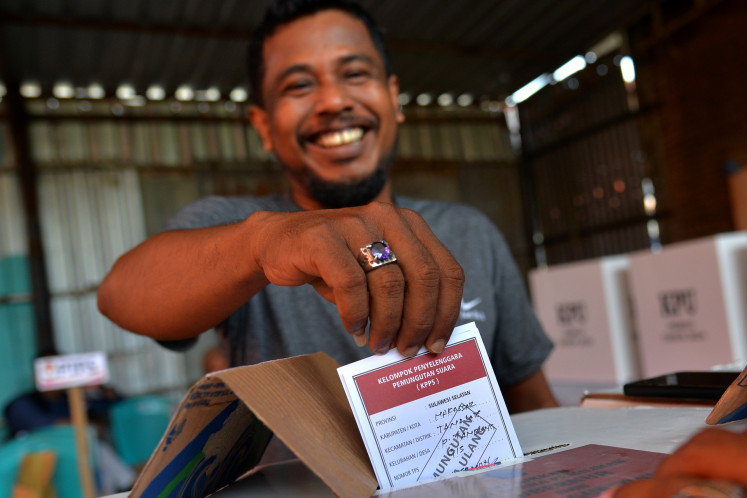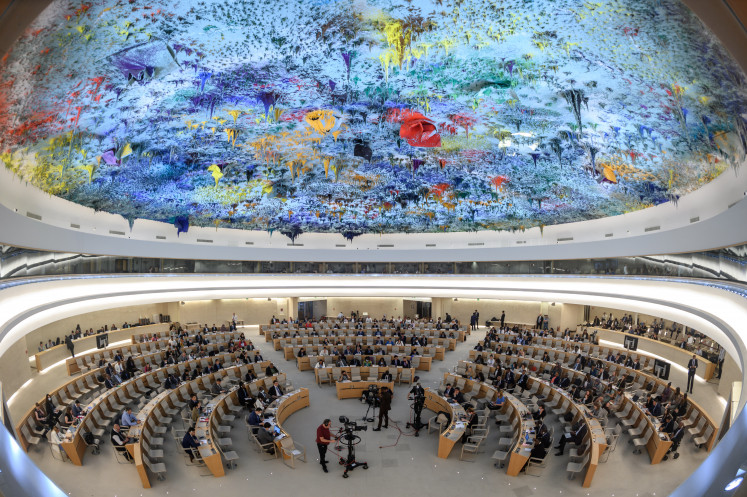Popular Reads
Top Results
Can't find what you're looking for?
View all search resultsPopular Reads
Top Results
Can't find what you're looking for?
View all search resultsYoung Muslims in televangelism
The religious life of young people or teenagers has recently become the deep concern of many religious studies scholars
Change text size
Gift Premium Articles
to Anyone
The religious life of young people or teenagers has recently become the deep concern of many religious studies scholars. The publication of a book edited by James Heft entitled, Passing on the Faith: Transforming Traditions for the Next Generation of Jews, Christians, and Muslims (2006), justifies this increasingly deep concern.
The central argument of the book is about the necessity of transmitting religious teachings and identities from one generation to the next. The importance of this religious transmission is applied to all Abrahamic religions, from Judaism, Christianity to Islam. Religious scholars are now rethinking how to strengthen the role of religion to stimulate an energetic faith in the next generation.
Does the same issue take place in the context of Indonesian Islam? Yes, much has been undertaken by Muslims in Indonesia, as with other parts of the Muslim world, for Islam to be transmitted to the public. But less has been devoted to putting this Islamic transmission segmented and oriented toward young people and teenagers.
Let’s make a small comparison between the Islamic transmission within popular print publications and TV programs (or better known as “Islamic televangelism”). There was a boom in popular print publications devoted to transmitting Islamic teachings to the young and to teenagers. This kind of publication is popularly referred to as “Islamic teen literature [teenlit]”.
From the perspective of ideas and materials, there are two broad categories of Islamic “teenlit”: General Islamic “teenlit” and pesantren-based Islamic “teenlit”. The general Islamic “teenlit” promotes wider issues, ideas, and materials of Islamic teachings applied to Muslims’ lives.
The pesantren-based Islamic “teenlit”, however, develops issues, ideas and materials taken from Islamic values specifically rooted in pesantren teaching and applied particularly to a pesantren-related life. It is thus more specific than general Islamic “teenlit” in terms of the sources of ideas and materials of publications.
This kind of Islamic “teenlit” can be exemplified by publications such as Gus Yahya Bukan Cinta Biasa (Gus Yahya, Not a Common Lover) by Fina Af’idatussofa (2006) and Bola-Bola Santri (Stories about Pesantren Students) by Shachree M. Daroini (2005).
The production of Islamic “teenlit” aims mainly to bring Islamic teachings down to teenagers, and to transmit them in accordance to the characters and the needs of teenagers. Perdana in his books Ngefriend sama Islam (Be friendly with Islam), for example, remarks that books of this kind aim “to seek to present the picture and character of Islam as a religion of friendship, peace and convenience for the young and the teenagers”.
Let’s compare the boom of Islamic “teenlit” with Islamic televangelism. What’s up with the presentation of Islamic teachings for the young and the teenagers through the TV channels? Almost no TV programs are specifically developed for and devoted to this population group, to the best of my knowledge.
This reality should be a concern for many people. Just compare it with other so-called Islamic TV miniseries (or sinetron religi). Even though the miniseries are a rising phenomenon and are on several TV channels, the materials, issues and segmentation are mainly for adults.
The recent miniseries of Munajat Cinta (The Prayer of Love) starring Baim Wong, Zaskia Adya Mecca and Rianti Cartwright, and broadcast prime time (8:00 pm) on RCTI is an example.
Exploiting the triangled love plots through the strongly-held presentation of polygamous family life between these characters, this Islamic TV miniseries does not appear specifically to be devoted for the consumption of the young and the teenagers.
During Ramadan of this year as well, a very limited number, if any, of Islamic TV miniseries and Islamic televangelism are segmented specifically to this age group. Look at the miniseries such as Aqso dan Madina (Aqsha and Medina) on RCTI starring Marshanda, Dude Herlino and Carissa Puteri. The plots, stories, and materials presented are more for adult consumption than for teenagers.
Certainly profit is a factor. The miniseries which exploit plots and stories about the drama of love as well as conflict and harmony in personal life has certainly allowed the TV stations that broadcast them to become the most preferable and favorable channel with a high rating.
The Islamic televangelism segmented for the young is a neglected subject as well. The popular Islamic televangelists such as Abdullah Gymnastiar (or more popularly addressed as Aa Gym), Yusuf Mansur and even Arifin Ilham seem to have neglected this subject and segment in their own televangelism activities.
The writer is a lecturer at the State Institute for Islamic Studies (IAIN) Sunan Ampel Surabaya, and a PhD Candidate at the University of Queensland, Australia. He can be reached at: akh.muzakki@yahoo.com










